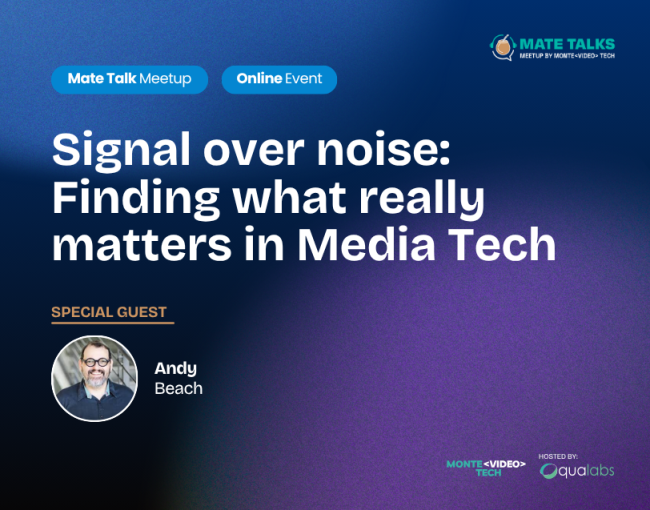MPEG-DASH 6th Edition
Kicking things off, Alex Giladi walked us through the comprehensive upgrade that MPEG-DASH has undergone with its 6th Edition, finalized in May 2025 and submitted to FDIS (Final Draft International Standard).
From media presentation insertion to L3D-DASH, duration patterns, and multiview HEVC, the edition tackles implementation challenges.
Media Presentation Insertion: DASH Interstitials Reimagined
Instead of relying on traditional server- or client-side ad insertion, MPEG-DASH now supports Alternative MPD Events—cachable, trigger-based instructions for inserting ads dynamically.
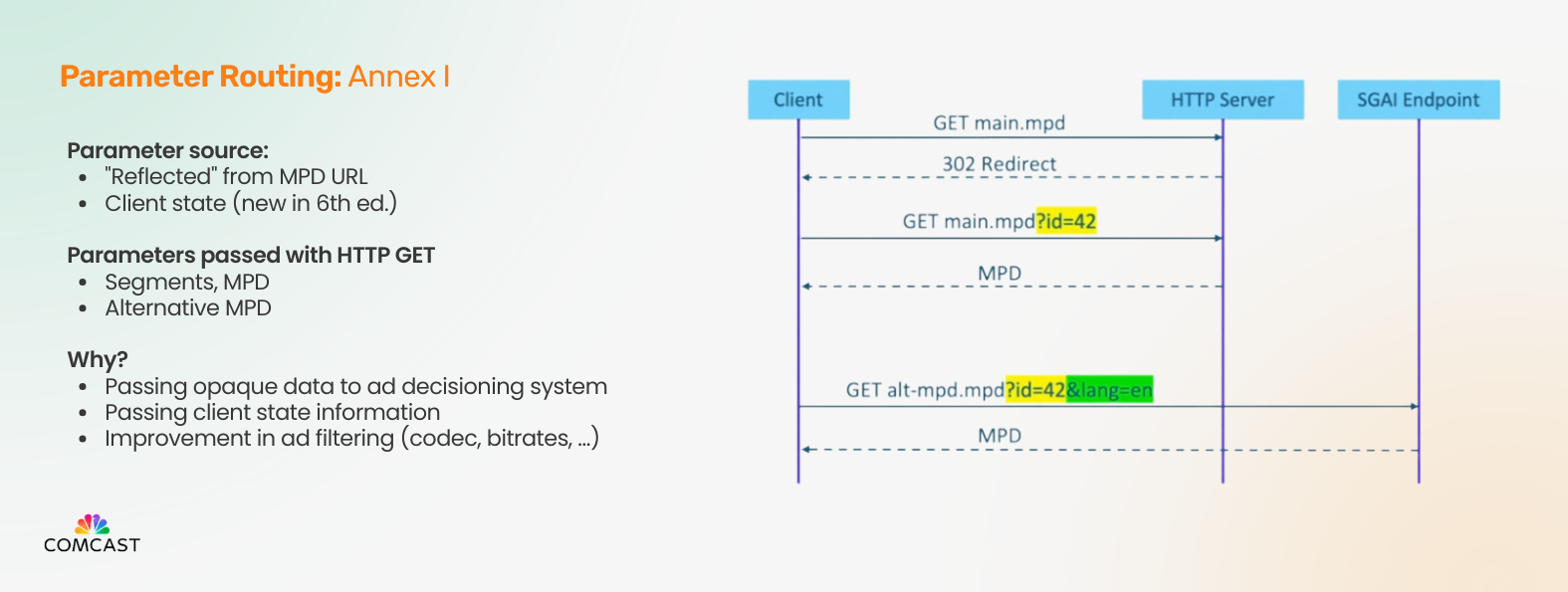
“We have a cachable MPD. It has triggers... and the client executes an event, asks an SGAI endpoint what to play, and gets an MPD back.” explained Alex.
L3D DASH: Bridging with Low Latency HLS
With L3D (Low Latency, Low Delay DASH), the spec now aligns better with low latency HLS. “We want to try starting playback immediately,” Giladi emphasized. L3D introduces discretely addressable partial segments, new syntax elements, and low-delay segment sequences, achieving latency reductions of up to 1.8 seconds.
This approach maintains HLS compatibility while keeping DASH's segment templates intact.
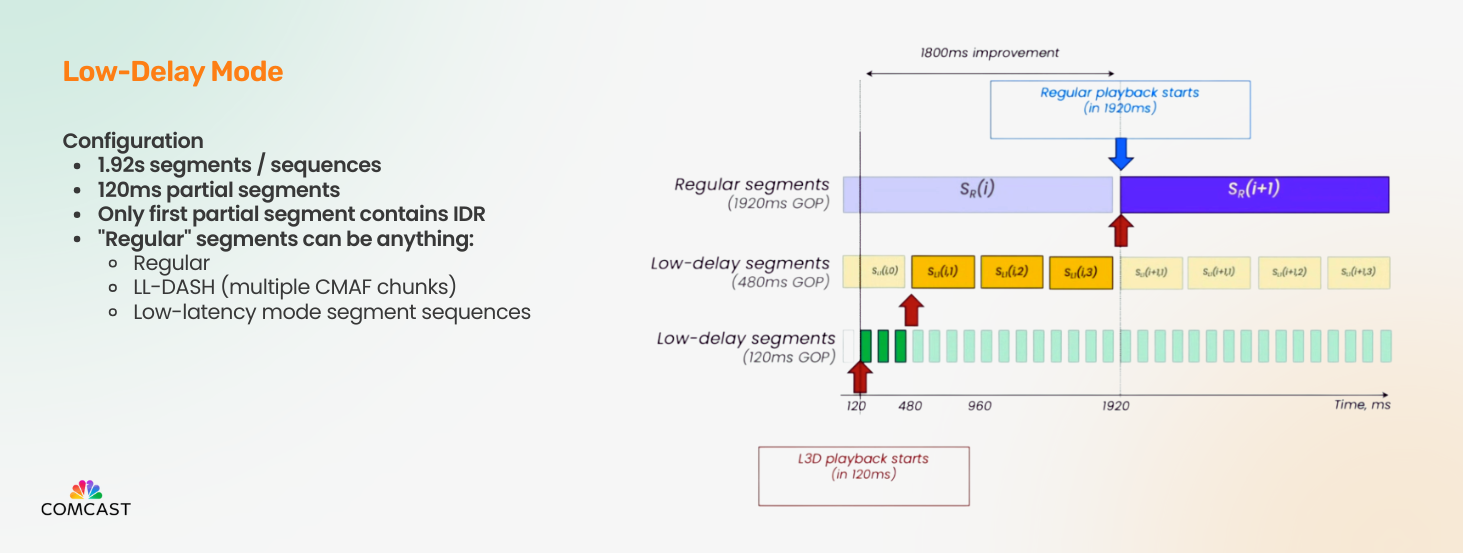
Duration Patterns: Solving Audio-Video Drift
Addressing long-standing A/V sync issues when using US frame rate (60000/1001) , duration patterns were introduced. “You still get drift,” Giladi admitted, “but it will be tiny enough to fix this with periods… I would probably go until you accumulate up to 40 milliseconds and then cut.”
This innovation, proposed by the likes of Amazon Prime and Elemental, uses segment duration patterns to align audio and video more precisely over time without bloating the MPD or losing precision.
Content Steering & CMCD
DASH 6th Edition now officially integrates Content Steering via serviceLocation attributes, enabling more dynamic and prioritized delivery pathways. It also introduces syntax updates to help clients configure and send CMCD (Common Media Client Data) consistently—supporting key-value telemetry like buffer length, playback rate, and session identifiers.
Additionally, the update accommodates multiview HEVC, a feature gaining relevance with devices like Apple Vision Pro.
DASH 6th Edition Implementation
One of the most exciting early implementations of these features is the IBC25 Accelerator Project, where broadcasters like British Telecom are testing DASH 6th Edition in practical scenarios.
The setup involves an SGI endpoint that handles alternative MPD logic, VAST-to-list MPD translation, and beaconing via CMCDv2—demonstrating how the 6th Edition specs can operate at scale.
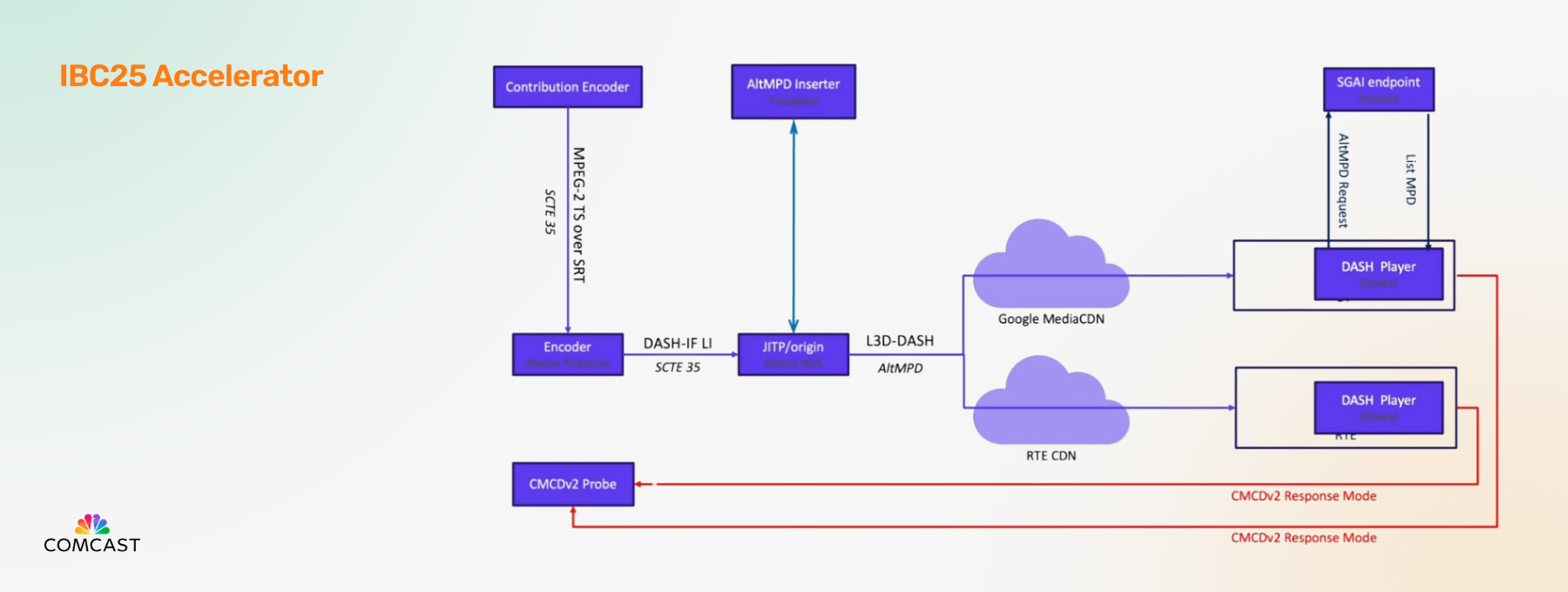
Playback Sync with CMCDv2 + CMSD
Nicolás Levy delivered a demo of an open-source project developed in collaboration with Alex Giladi, focused on synchronizing thousands of live playback sessions using CMCDv2 and CMSD.
This synchronization project aims to re-create that shared real-time experience across devices and networks—a tall technical order given today’s fragmented video delivery stacks.
The Core Ingredients: Clock, Target Latency, Communication
To make sync work at scale, the solution relies on:
- A common clock reference across players.
- A target latency that players aim to maintain.
- Bidirectional communication using CMCD (player → server) and CMSD (server → player).
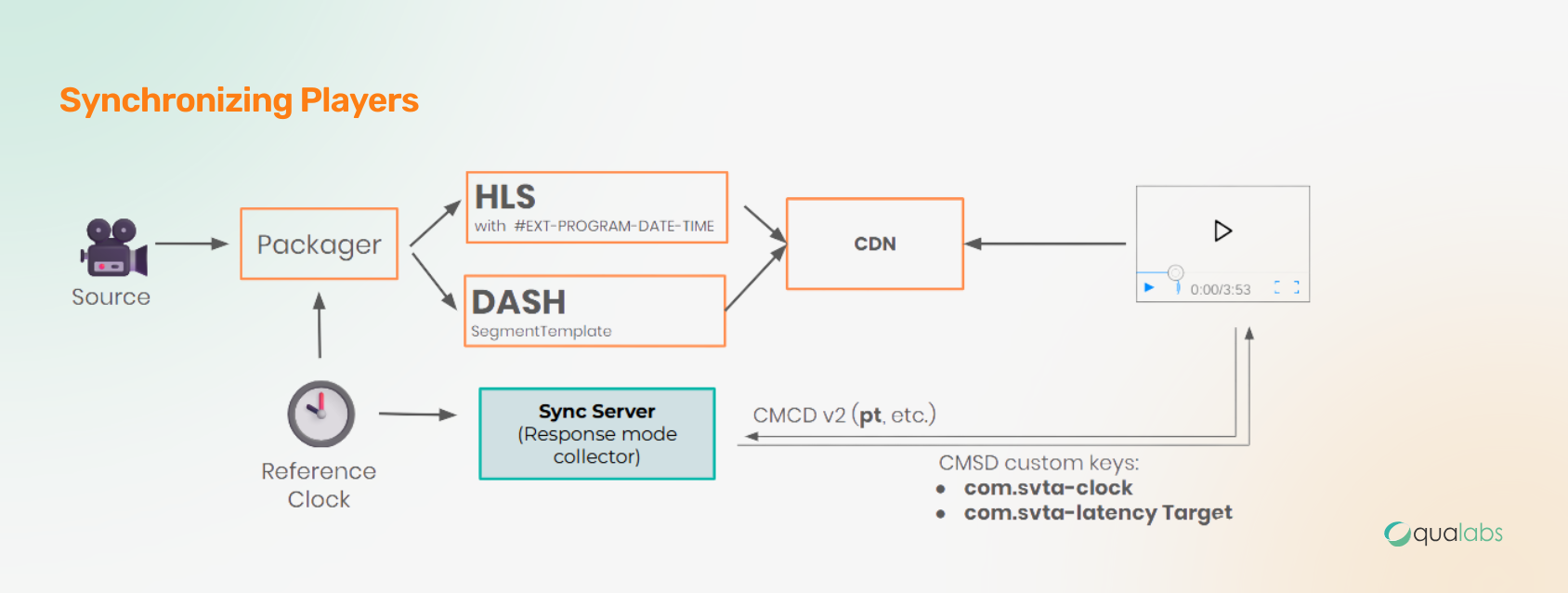
Using CMCDv2, players report their playhead time as a Unix timestamp, while CMSD lets the server return clock and latency targets dynamically.
“If we are ahead or behind the target, we modify the playback rate to achieve the latency we want” Levy explained, showcasing a live dashboard tracking user sessions in real time.
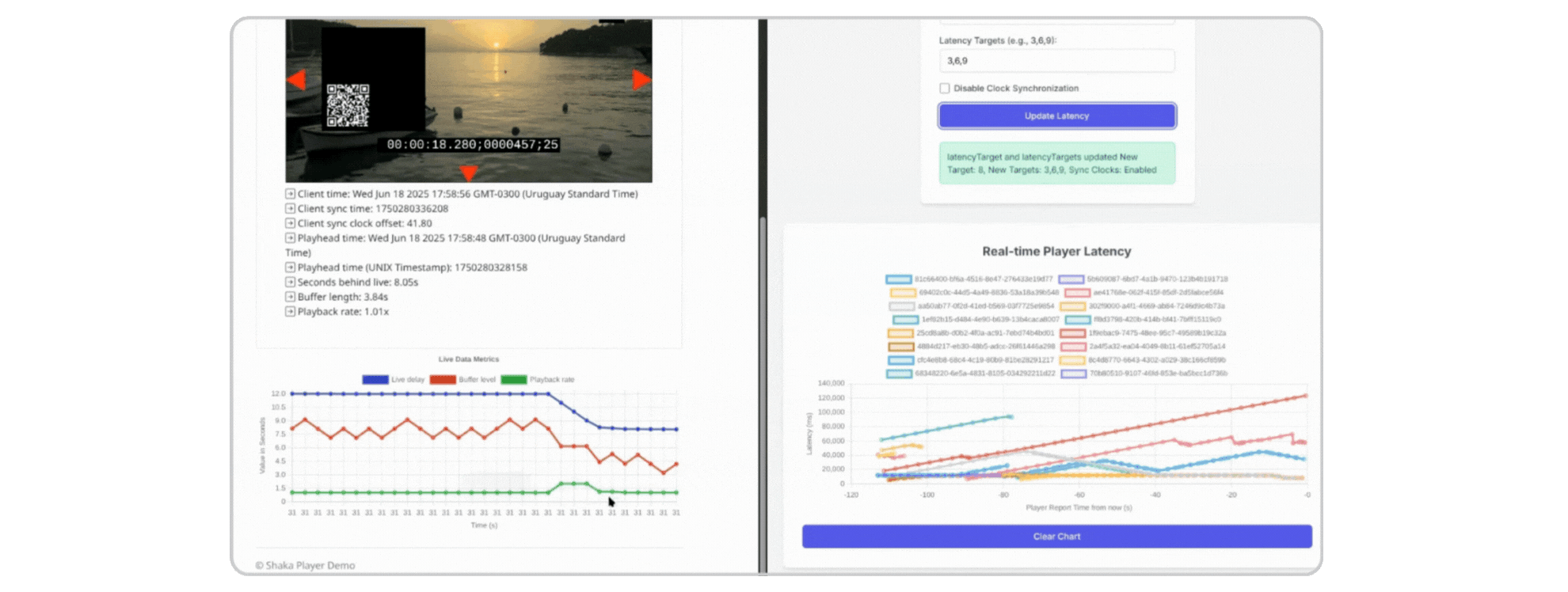
Real-Time Playback Adjustments
The prototype dynamically adjusts playback speed to bring each player to the target latency. If behind, it speeds up. If ahead, it slows down. When Nicolás switched the target from 12 to 8 seconds mid-demo, players responded instantly.
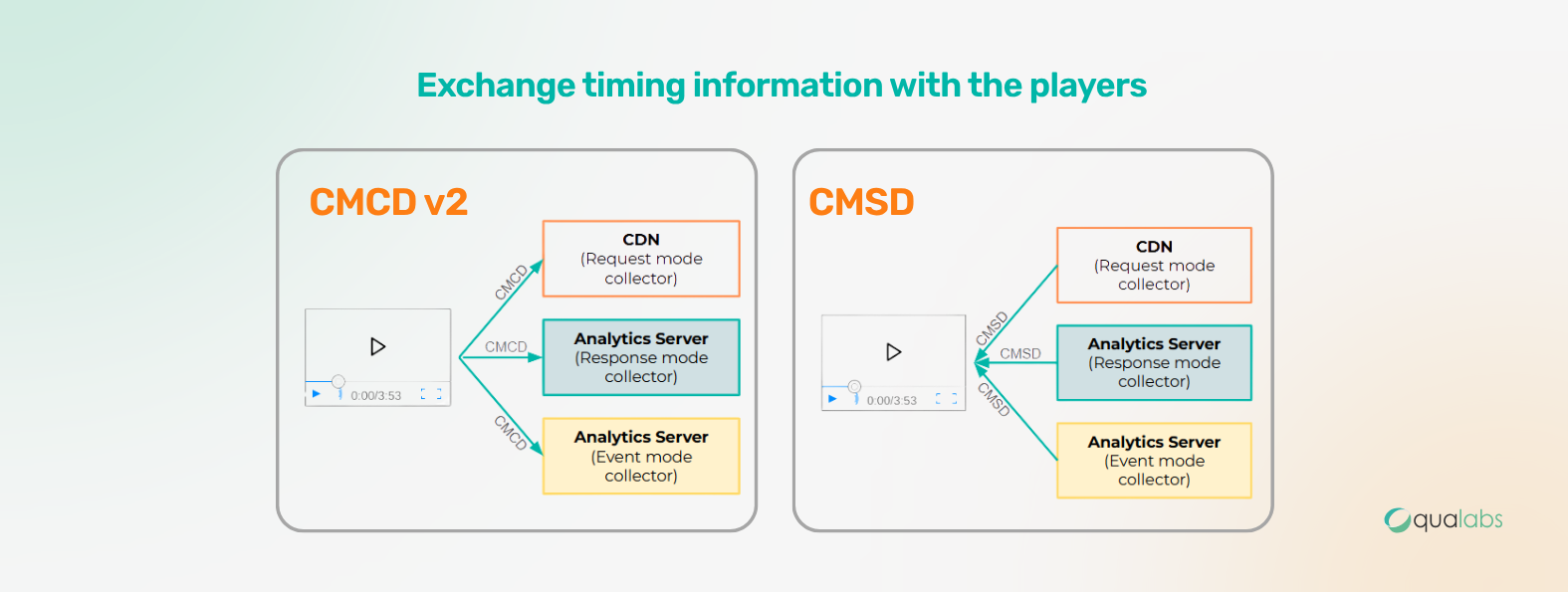
Open Source, Real Impact
This solution is open-source and modular. As Nicolás shared, “We can create latency ladders for players that cannot reach the lowest target and improve the server-side logic to propose latency buckets based on real CMCDv2 data.”
It’s a timely innovation for broadcasters and streamers seeking to deliver synchronized, low-latency experiences across millions of viewers without locking themselves into proprietary platforms.
Takeaways
From spec-level upgrades in DASH to synchronization solutions. The streaming ecosystem is evolving fast—and the community is rising to the challenge.
Special thanks to Alex Giladi for his deep-dive into DASH's 6th edition and to Nicolás Levy for pushing forward scalable sync solutions built on open standards.
Stay tuned—because this is just the beginning.


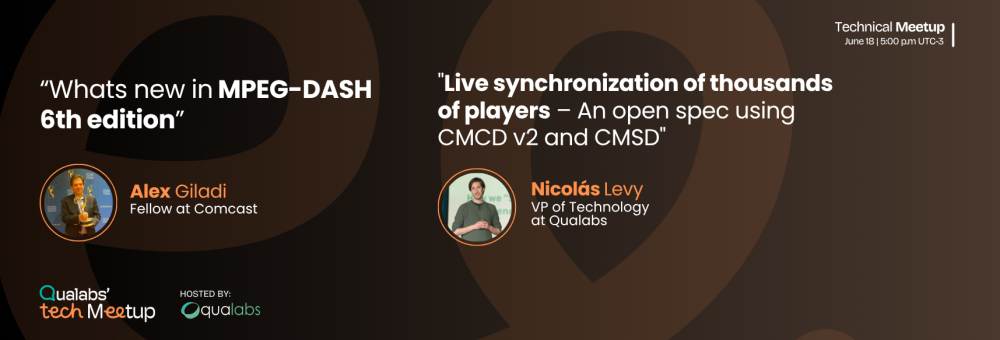
.png)

